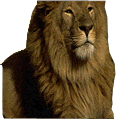|
![]() | videos| Site Map | Policy | Contact us |
| videos| Site Map | Policy | Contact us |
- Culture
- Music
- sports
- Politics
- Geography
- Tourism Potentials
- Environment
- Relief/climate
- Risks/disasters
- Activities
- Economy
- Transport
- Hotels
- Others
- Education
- Towns/provinces
- Languages
- Community
- Forums & discussions
- Videos About us
Towns in Cameroon
Douala
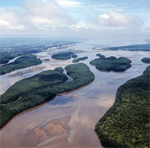 It is the economic capital of Cameroon, also serving as the main entrance into the country through its International airport and sea port at the Atlantic coast. It has a population of over 2 million inhabitants coming from different areas of the country. This is in part due to the fact that 75 % of industrial activities in Cameroon are carried out here. This is a centre of attraction for migrants principally youths from rural areas in search of jobs. This town is today facing several infrastructural problems due to an increase in population such as severe traffic jam at rush hours, urban pollution from poor sewage disposal mechanisms, rapid growth of urban ghettoes etc. Recently, measures are being taken by the City Council delegate to improve on living conditions through the rehabilitation of roads and bad drainage systems. Illegal land occupants are also being expropriated and new roads are being constructed. The fight is still on; although much still has to be done.
It is the economic capital of Cameroon, also serving as the main entrance into the country through its International airport and sea port at the Atlantic coast. It has a population of over 2 million inhabitants coming from different areas of the country. This is in part due to the fact that 75 % of industrial activities in Cameroon are carried out here. This is a centre of attraction for migrants principally youths from rural areas in search of jobs. This town is today facing several infrastructural problems due to an increase in population such as severe traffic jam at rush hours, urban pollution from poor sewage disposal mechanisms, rapid growth of urban ghettoes etc. Recently, measures are being taken by the City Council delegate to improve on living conditions through the rehabilitation of roads and bad drainage systems. Illegal land occupants are also being expropriated and new roads are being constructed. The fight is still on; although much still has to be done.
Maroua
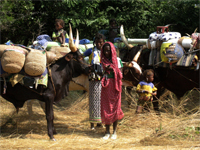 This is the headquarters of the Far North Province and is the most populated town in this area. This town is surrounded by mountains, lying between like a basin. It is separated by River Kaliao into two separate sections. This river completely dries off during the dry season, due to record high temperatures of 50°C. Under such harsh temperatures it is not uncommon to find the tall dark people of this area wrapped in long garments locally called ‘gandouras’, going about their businesses. Business activities here are not only limited to the confines of Cameroon; it extends as far as Nigeria thanks to the proximity they share. Several routes exist; fueling the informal sector with goods but putting the government out of any fiscal benefits which could trickle out in the form of taxes. Such illegal trade has also increased the crime wave in the area especially on the Maroua-Kousseri highway where thieves some times station, stop vehicles and rob businessmen of all cash and some times goods. Some of these gangs are local residents meanwhile some are from Chad. The government has over the years fought against this phenomenon and brought it to a tolerable state. Such intervention was necessary for the wellbeing of the Banks, hotels, travel agencies and handicraft/arts markets that have gained ground in the area. Maroua is a centre and meeting point for tourists, businessmen and people from neighboring Nigeria. It is also one of the greatest tourist destinations in Cameroon.
This is the headquarters of the Far North Province and is the most populated town in this area. This town is surrounded by mountains, lying between like a basin. It is separated by River Kaliao into two separate sections. This river completely dries off during the dry season, due to record high temperatures of 50°C. Under such harsh temperatures it is not uncommon to find the tall dark people of this area wrapped in long garments locally called ‘gandouras’, going about their businesses. Business activities here are not only limited to the confines of Cameroon; it extends as far as Nigeria thanks to the proximity they share. Several routes exist; fueling the informal sector with goods but putting the government out of any fiscal benefits which could trickle out in the form of taxes. Such illegal trade has also increased the crime wave in the area especially on the Maroua-Kousseri highway where thieves some times station, stop vehicles and rob businessmen of all cash and some times goods. Some of these gangs are local residents meanwhile some are from Chad. The government has over the years fought against this phenomenon and brought it to a tolerable state. Such intervention was necessary for the wellbeing of the Banks, hotels, travel agencies and handicraft/arts markets that have gained ground in the area. Maroua is a centre and meeting point for tourists, businessmen and people from neighboring Nigeria. It is also one of the greatest tourist destinations in Cameroon.
The dominant religion here is the Muslim faith, but other religions exist here in peaceful coexistence and tolerance.
Garoua
Garoua is less than 200 kilometers from Maroua. The two towns have lots of similarities in terms of the ethnic groups that live in them. This is the place of origin of the first president of the republic; Ahmadou Ahidjo. It was initially the capital of what was referred to as the great North; this included the territories of the Adamawa, the Norh and Far North provinces. This lasted up till 1983 when it was split up into the different administrative units earlier mentioned. This town is also an important tourist site and has an international airport that serves as a stop over for pilgrims from Mecca. It has the greatest mosque in the northern part of the country. It has a population of more than 200 000 inhabitants and is a centre of business for businessmen who do internal and external business with Nigeria. It is also a good tourist destination especially for those interested in seeing the lamidos and their traditional palaces.
This town is also one of the most prosperous agricultural centers in Cameroon. It is the site for the agro industrial firm involved in cotton production (SODECOTON) as well as other primary products like sorghum, onions, maize etc. It is also an important centre of grazing cattle, goats and sheep in Cameroon; reason why strategies have been put in place to improve on its productivity through the creation of a national laboratory and veterinary ( Lanavet).
Bamenda
If a visitor decided on visiting only one location in Cameroon, Bamenda stands out as one of the most attractive and picturesque site to visit. It is the capital of the North West Province and over time the name of this town is erroneously used to refer to the Anglophone section of the country. It has a population of more than 500 000 people and is ever increasing due to an influx of people from rural areas. It is a town of hard working, dynamic and one of the most welcoming people in the republic. This explains why several foreigners and visitors end up living in this town. It has a rich cultural diversity marked by very attractive, colorful traditional costumes, fine arts and handicrafts from clay, raffia palm fiber and other local materials. Pottery is also highly developed and there is a dynamic pottery market in progress. There are equally a number of handicraft centers that are major attractions to tourists. Another aspect about this town is the fact it is one of the cleanest towns in the country. It is also one of the cheapest towns to live in; housing is cheap, food items are cheap and diversified and there are complex and reliable health facilities here. The most popular health facility here is the St. Louis Clinic, having a medical training centre attached to it.
The town has several secondary/high schools and colleges. It also has a polytechnic and University that attract students from all over the republic. Bamenda has a steep cliff face overlooking it, locally referred to as station hill. Standing on the station hill and observing into the town gives a panoramic view of a settlement within a basin bordered from side to site by massive mountain ranges. This characteristic is partly responsible for the very cool climate of the area. The mornings are extremely cold, at times reaching 0ºC and causing morning dews and fog.
Important events have marked the history of this town in Cameroon, such as the fact that in spite of the leader of the main opposition party in Cameroon, SDF being from Bamenda, it is paradoxically here that the ruling party (CPDM) was formed. The ideology and long stay of the latter in power is very much detested by the Bamenda People. It is also home to the formal Prime Minister of the Republic, Simon Achidi Achu.
Limbe
Limbe is another very attractive town in Cameroon. It is an English speaking town like Bamenda but contrary to the latter, it is an area where agro industrial plantations have been highly promoted under he auspices of the CDC. It is also a centre of attraction for workers coming from different parts of the republic especially plantation workers coming from the North West province as laborers. The headquarters of the CDC is also found in Limbe.
Besides agriculture, Limbe is the Petrol capital of the republic. The main petroleum refinery in Cameroon (Societe nationale de rafinage; SONARA) is found in Limbe. This is an engine in the growth and development of this town. Several hotels and resorts a found here and serve as hosting sites for tourists. Limbe is very attractive and well noted for its constant sea breezes which blow across the town. The people of Limbe take advantage of these breezes by constructing houses in a parallel direction to the ocean and placing windows and/or doors facing the oceans direction. This keeps homes continuously aerated. Another principal attraction of the town is the Limbe Botanical garden with a high biodiversity of fauna and flora species as well as a jungle village at its centre; all serving as major tourist attractions in the town.
Limbe has a population of over 300 000 people and is only 70 kilometers from Douala. It is a very clean town with several attractive beaches, a good climate and several historical sites. From another perspective it is situated at the foot of the mount Cameroon.
Much can be discovered about Limbe by visiting its museums and the urban council which contain lots of archives about the town.
Kumba
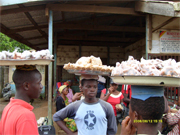 Autochthons and many other people who have lived in Kumba generally refer to this town as ‘K town’. This town has a population of over 400 000 inhabitants and is generally regarded as the economic capital of the south west province. It is an area that has a dynamic business sector; highly favored by the influx of uncontrolled and most often fake goods from Nigeria. For long, Kumba was popular for armed robbery, high crime wave and counterfeiters. Today, the situation is being put under control by an active police force. Several youths are today involved in hacking and scamming on the internet; passing under false identities and claiming to be selling inexistent goods on the internet.
Autochthons and many other people who have lived in Kumba generally refer to this town as ‘K town’. This town has a population of over 400 000 inhabitants and is generally regarded as the economic capital of the south west province. It is an area that has a dynamic business sector; highly favored by the influx of uncontrolled and most often fake goods from Nigeria. For long, Kumba was popular for armed robbery, high crime wave and counterfeiters. Today, the situation is being put under control by an active police force. Several youths are today involved in hacking and scamming on the internet; passing under false identities and claiming to be selling inexistent goods on the internet.
K town today has a very active urban council that is doing much to ameliorate on its road network which for long has been muddy during the rainy season and very dusty during the dry season. The town has very good prospects of development towards a very organized township thanks to a very good urban plan that was put in place long before the growth of the town. Interurban road network to and from this town is also being improved upon thanks to efforts by the government over recent years.
Nkongsamba
This town is located between the Mbo plain and the mount Nlonako and at the foot of the Mount Manengouba. It is a town of transit between the Western High Plateau and the Highlands of North West. It is located some 200 kilometers from Douala, the economic capital of the republic. This town is a cosmopolitan area integrating several people of diverse ethnic origins. This is evident when looking at the fact that this area is a francophone section of the country yet, Pidgin English is widely spoken even by the autochthons of the area.
This town has very fertile soils which greatly account for the fact that it is a great centre for agriculture. Cocoa, banana, pineapples and rice plantations have a great presence on the landscape of this area. This area was an industrial town but all these are in the doldrums; coffee, rice and plywood industries that use to exist here have all closed. This partly explains why the 150 km of railway that use to link this town to Douala is no longer functional; it only exists as abandoned historical relics. They were constructed as early as the 20th century by the Germans, first colonial masters of Cameroon. Another track however exists today, linking Nkongsamba to Douala.
There are also tourist attractions in this town such as Mount Manengouba, the Male and Female lakes, the waterfalls of Ekom etc. Hotels, banks and money transfer agencies facilitate business activities and exchanges between this town and its neighbors like Melong, Manjo, Mbanga, Loum, Penja-Njomne etc.
Bafoussam
This is the largest town in the West province, having more than 230 000 inhabitants. It is the town in which the legendary leader of the UPC, Ernest Oundie was executed. It is the economic and administrative headquarters of the Bameleke region. Located within the Noun plain and flanked from one side by the High plateau, this town has several tourist attractions and a very favorable climate. It has more than high class 15 hotels and several restaurants that offer diverse meals of local an international taste.
Several cultural artifacts present here testify to the rich Bameleke tradition that prevails in spite of the rapid rate of urbanization. This town also has a unique reputation of a national junction of roads between the North West, Adamawa, Centre and Littoral Provinces. Equally, direct routes link up the town to divisional headquarters of the West province like Dschang, Mbouda, Foumban, Bangante, Bafang, Baham and Bandjoun.
The population high is highly business inclined; this explains why the town is full of business centers, kiosks and all sorts of shades destined for one business site or the other. This makes the town very busy with movements to and fro in small Lorries, taxis and above all motor cycles that have become a dominant means of transport through out the country.
The town also has a number of small industries involved in sectors like soap fabrication, weaving of bags, making machines for the grinding of maize and tubers like cassava. It also has a highly developed infrastructure, many storey buildings and sporting grounds. The road network is however gradually in ruin; making the dry seasons very dusty in the town.
Yaounde
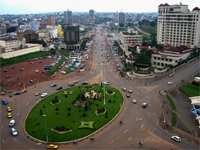 This is the town of the seven hills as generally known. It is also called ‘Ongola’ in the ewondo language. Yaoundé is the political capital of Cameroon and also the headquarters of the Centre region. It was made political capital since 1921 and continued occupying this position even after independence. The presidential palace is located at Etoudi quarters at the top of a small hill. This is one of the best and most guarded presidencies in Africa. It is the residence of the president of the republic.
This is the town of the seven hills as generally known. It is also called ‘Ongola’ in the ewondo language. Yaoundé is the political capital of Cameroon and also the headquarters of the Centre region. It was made political capital since 1921 and continued occupying this position even after independence. The presidential palace is located at Etoudi quarters at the top of a small hill. This is one of the best and most guarded presidencies in Africa. It is the residence of the president of the republic.
This town has one of the most hospitable climates in Cameroon. It contains all the ministries in the country, higher institutions of education, a big football stadium (Ahmadou Ahidjo stadium), a sports complex under construction, several attractive parks, supermarkets, banks, hotels, a golf course, several embassies, military headquarters and several other services not found anywhere else in the republic.
It has a good intra urban transport network and an international airport. It is a favorable travel destination for tourists who have the opportunity of visiting several handicraft centers, historical sites, monuments, nightclubs, bars and supermarkets. Some great sites in Yaounde are the Reunification monument, the statues of Dr.Eugene Jamot and Charles Atangana, the Former Presidency now the National Meseum, several small lakes around the town, the French cultural centre and the Handicraft centre at Monte Anne Rouge. The town has intra urban buses and taxis that take people to any destination within the town at very cheap rates.
It has a good security record ever since the creation of a mobile and rapid intervention police unit. This though, has not been very successful in quarters with ghettoes like Briquetterie, Madagascar and Bonamoussadi that have a poor an unplanned road network. Crime wave in such quarters still maintains its records.
Yaoundé has a contrasting relief, with some areas very high and others very low and prone to floods during the peak of the rainy season. Contrasts can also be noticed in the nature of habitats and quarters. There are good and well planned quarters, with very sophisticated buildings in places like: Maison Balnche, Bastos and Kuwait city; and very distorted, dirty, promiscuous and decayed quarters like the ghettoes earlier mentioned. Such contrasts are a reality in the day to day life of urban dwellers in Yaoundé and Cameroon at large. Very poor people live side by side rich people; this is common on streets like Avenue Kennedy where street children and mad people idly stray along the streets waiting to beg from people in luxurious cars.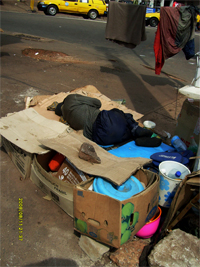
Yaoundé presently has a powerful City Council that is highly engaged in ameliorating living standards through the construction of roads, rehabilitation of structures, creation of parks and expropriation of illegally occupied lands. Expropriations especially in 2008 have enabled the government to recover a lot of land needed for other useful projects yet has thrown many people into the streets and made life difficult for rural migrants in town who mostly live in such areas.
This town is in constant expansion into suburban areas that were initially occupied by virgin forests.
Edea
Most Cameroonian cities owe tribute to Edea for being the main supplier of Hydro electrical Power in Cameroon. This industrial town has a population of over 300 000 inhabitants and is a stop over on the Douala-Yaounde highway. Edea is important for its two hydro electric dams, one visible from the road on the old bridge built by the Germans before the First World War and another at Songloulou, situated some 20 km from the urban centre. Three quarters of the electricity produced by the first dam is used directly in the Aluminum industry found there (ALUCAM). This industry is a driving force in the economy in Edea, producing over 78 693 tons of aluminum in 1994-1995 and employing over 1000 workers.
The town is dominated by two ethnic groups; the bassa and the bakoko. Its location between Yaounde and Douala has however exposed it to an influx of people from diverse ethnic backgrounds. It has lots of attractions, hotels, banks and a good transport network. It also has a vast expanse of plantations, especially palm plantations; visible from the main road leading to Douala.
Written with Extracts from Clement Malliat (2000)
Regions>>>
To advertise on this site please contact us 
Copyright © 2009 www.cameroon-tour.com| All Rights Reserved
Authors Mphoweh jude Nzembayie and Futonge Nzemabyie Kisito
